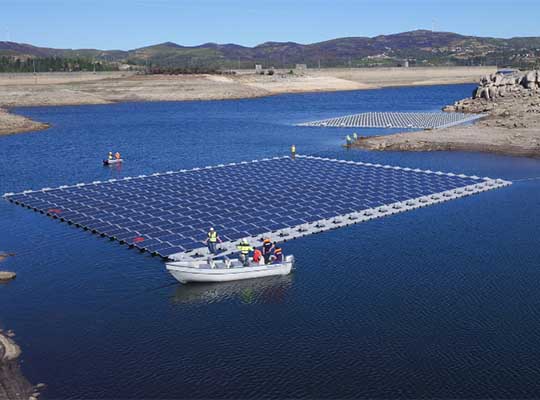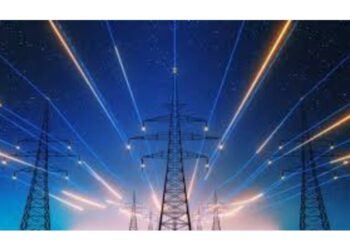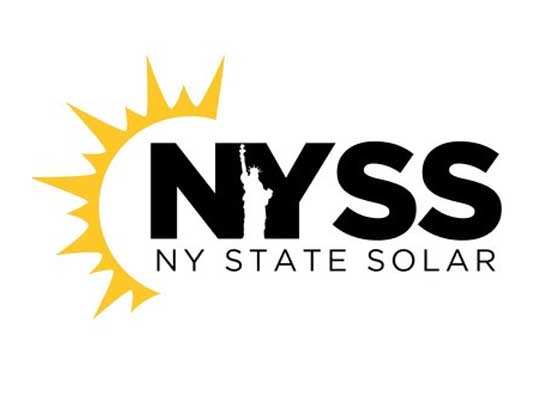Renewable energy role to provide electric power (the life line of present day civilization) and to protect our environment is well known. Our experience with the use of different major renewable sources like solar, wind and wave available to us has been very encouraging and independent technological developments in these renewable energy sectors have gained significant ground with these forms of renewable energy being utilized in a good proportion and expected to grow further. Energy captured from tidal motion, waves, and currents along with wind and solar energy can be used to produce electricity, providing power 24/7 to millions of homes in the coming decades. In order to minimize the need of separate infrastructure as well as to exploit new horizons like floating or orbiting solar plants, for the utilization of renewable resources individually, scientists and engineers are working towards the combined or hybrid systems of energy conversion making use of wind, wave and solar energy at the same platform to generate electricity.
While wind and solar have been the leading sources of renewable energy up to now, waves are increasingly being recognized as a viable source of power for coastal regions. The hybrid renewable power plants analyse integrating wave energy into the grid, in conjunction with wind and solar. Hybrid renewable energy systems are being envisaged as a favourable mix of all three renewable energy sources ie., wave, wind and solar. Projects are coming towards a hybrid renewable energy system that exploits three renewable resources of wave, wind and solar energy. The wave power device was operated by movement of floaters with varying speed, which is connected to the mechanical racks. These mechanical racks move gears and pulleys, which provide forces to the pulley belts to rotate. The pulley belts are connected to the electric generator for electricity production. A unit of a wind turbine and of solar panels were selected and installed in the hybrid system. The final hybrid system was tested and the measurement results clearly show that the available wave, wind and solar resource could be harnessed together into useful work for electric power generation.
German company Sinn Power has proposed a hybrid offshore power generation platform that combines wind turbines, solar panels and wave energy harvesters to generate off-grid electricity for people living close to the coast. Offshore wave energy conversion is nothing new and pioneering new developments are taking place in this field all the time. However, what makes this particular platform unique is that it’s been designed to be modular and extremely easy to connect and expand, so a variety of different combinations are possible. Each floating unit, or module, consists of four integrated wave energy converters generating power relative to the water conditions. For regions with low potential for wave energy, the unit can also be equipped with an array of 20kW photovoltaic cells. Similarly, up to four small 6 kWp wind turbines can be equipped and finally a combination of all three is also possible, making optimum use of the environmental conditions surround the platform with no limit to how many units a potential could have. It’s conceived as a modular system that can be specified with any or all of these features, depending on power needs. Designed to handle waves up to six meters (19.6 ft) in height, it can harvest energy from waves up to 2 m (6.5 ft) high without the platform itself moving much at all with a series of floats that move 10-ft (3-m) pushrods up and down in response to wave activity. Each of these can generate up to 24 kW in ideal conditions, and there’s one at each corner of each 12 x 12-m (39.3 x 39.3-ft) floating unit. On top of that, 6 kWp capacity wind turbines are placed at each junction point, and covering the entire top surface with solar panels, which could contribute up to a total of 20 kW to the final output of the unit.
The company is pitching this as a renewable power option for island resorts to get the power back onshore. As per company, the wind, wave, and photovoltaic platform is scalable in capacity and can be designed to generate 80 kilowatts to power small houses by the coast and up to 2 megawatts to industrial buildings. The company has been around for five years at this point, and has working prototypes of similar wave energy harvesting systems installed, albeit attached to concrete walls and not floating. This super modular or hybrid system is same and can always use the same parts, the same electronics regardless of which configuration is constructed. The sea can be powerful, unpredictable and highly corrosive and durability of the technology is the biggest question. The maritime environment is challenging and all the energy systems on the platform contain sensitive components and power electronics that must not be exposed to any fluids. To cope with such conditions, the company developed a product family consisting of electric machines, power electronics, and storage solutions. The protection is provided by mechanical casings and electrical enclosures against intrusion, dust, accidental contact, and immersion in deep water. Such technologies are seen as a prospective movement toward a sustainable future by providing people all over the world with clean, reliable, and affordable energy harnessed from the power of wind, wave and solar all together.
Further reading:
- https://blog.sintef.com/sintefenergy/wave-energy-wind-solar/
- https://newatlas.com/energy/sinn-power-floating-wind-solar-wave-platform/
- https://www.forbes.com/sites/scottsnowden/2020/05/22/first-floating-ocean-hybrid-platform-can-generate-power-from-waves-wind-and-solar/#6846cf357f8c
- https://www.pv-magazine.com/2020/05/26/solar-arrays-on-wave-energy-generators-along-with-wind-turbines/
- https://www.researchgate.net/publication/298726248_WWS_hybrid_tri-renewable_power_system_to_generate_electricity_WWS_WaveWindSolar












